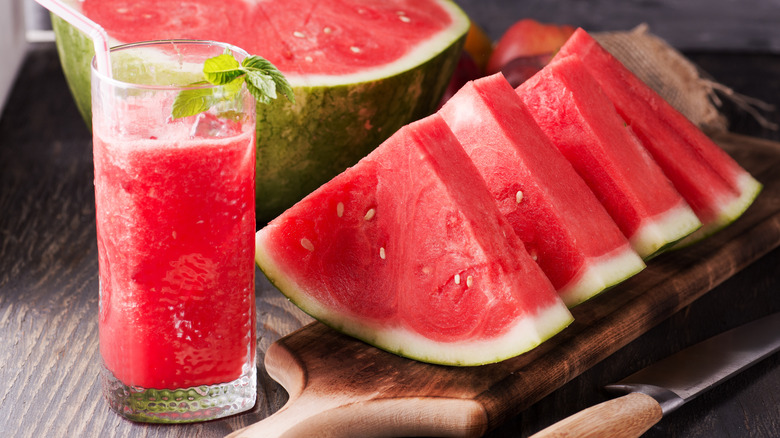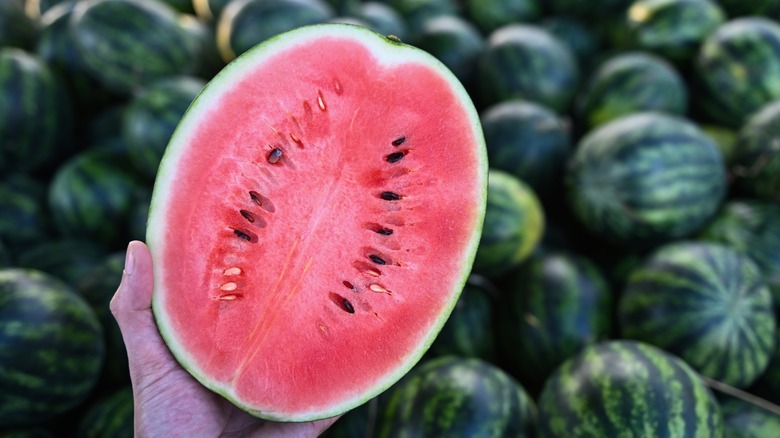Here's How Much Watermelon To Prep For Your 4th Of July Cookout
Nothing is better on a hot summer day than a cold slice of watermelon. The sweet, hydrating fruit is in season during summer and is an effortless dish to serve when entertaining as an appetizer or dessert. As you prepare for your 4th of July cookout this year, we can help determine how much watermelon you'll need for your backyard soiree.
According to Watermelon.org, the average seedless watermelon yields up to 70% flesh, depending on the variety. If serving half-inch thick triangular wedges, a large, 20-pound watermelon can be cut into maybe 100 slices. Assuming guests consume only two slices of watermelon each, you can feed about 50 guests with a single melon. If working with smaller five-pound watermelons is more manageable, one will yield roughly 20 slices or feed 10 people — if they control themselves. It's probably a good idea to have a little extra on hand, especially if kids will be present.
Try cutting the watermelon into hand-held sticks for a more elegant presentation. Simply cut the melon in half, place the cut-side down, and make thick one-inch slices across. Turn the watermelon 90 degrees and repeat, making one-inch slices and creating easy-to-eat sticks.
Of course, watermelon can also be enjoyed with a fork. If you don't want to clean up discarded rind in your backyard, serve the melon in half-inch cubes. A large watermelon may fill around 35 cups while a mini will yield up to nine cups, with roughly seven pieces per cup.
How to pick the best watermelon
When selecting a watermelon, there is no need to slap or knock on it with your fist like fellow shoppers. Instead, look for one that is symmetrical and uniform, free of bruises, soft spots, or cuts. Since watermelon is almost entirely water, it should feel heavy when you lift it up. Lastly, and perhaps most importantly, look for the bald, non-striated spot on the bottom of the fruit. This flat section is where it rested on the ground as it grew, showing it was allowed to ripen on the vine. It should be light yellow, not white or green, as that means it was harvested before ripening, and it may not be as sweet.
Before you cut watermelon or any fruit, whether or not you eat the skin, the Center for Disease Control recommends washing the surface thoroughly. Sometimes you will notice a 'Hollow Heart,' an internal crack in the flesh. Drastic changes in temperature as the fruit grows cause this but don't affect the melon's quality. Nosh away!
Whole watermelons can be stored for up to 10 days on the countertop. Once cut, keep the watermelon in the refrigerator, tightly covering the exposed surface with plastic wrap to prevent drying out, or place chunks covered in a container for three days. Watermelon can also be cubed and frozen for refreshing slushy beverages. On hot days, nothing hits like a cold watermelon granita.


